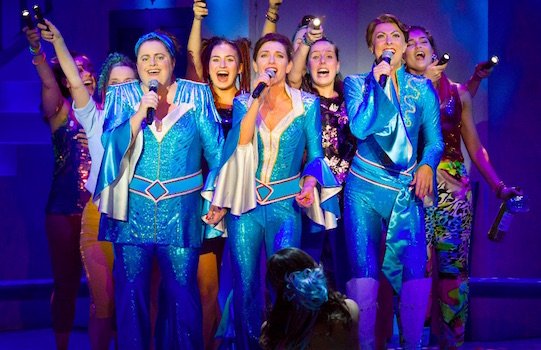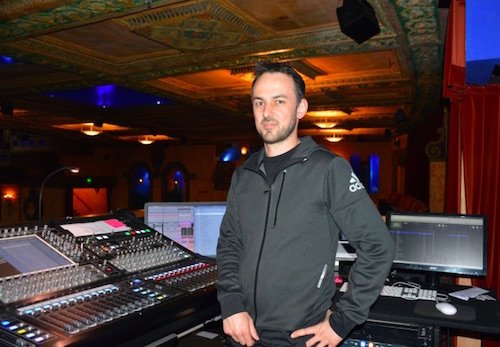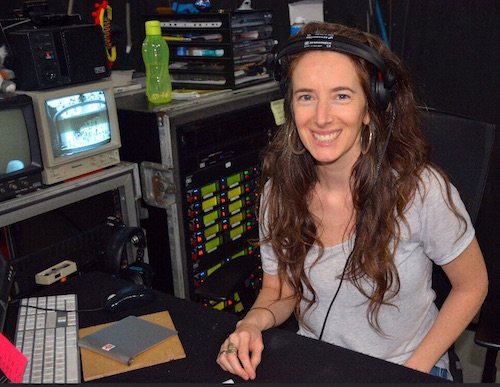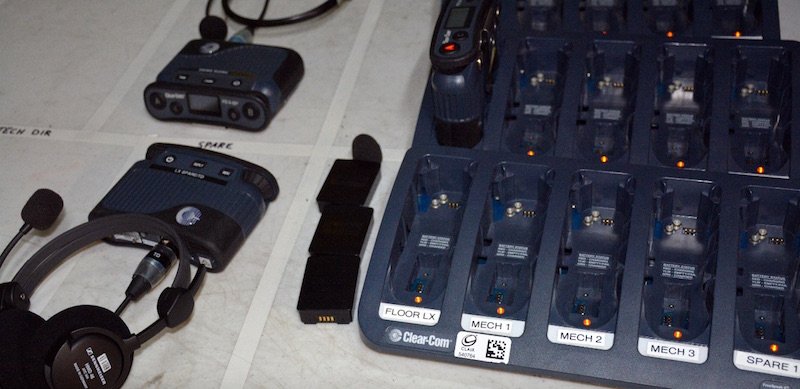News
9 Apr 2018
Mamma Mia!

Subscribe to CX E-News
Mamma Mia!
The ultimate feel-good musical Mamma Mia! is touring the country throughout 2018, having commenced its national tour in Canberra in November 2017 where it was the biggest theatrical production to play at the Canberra Theatre Centre to date.
By Cat Strom.
It’s one of the most commercially successful pieces of entertainment of all time, having grossed US$2 billion since its 1999 West End premiere. This Australian production has a completely fresh and new design with lighting by Gavan Swift and sound design by Michael Waters.
“The only constant is the story and the score, all the design elements are brand new,” remarked Michael, who also did Muriel’s Wedding last year so is now quite an expert on ABBA’s music.
“Gavan and I were the new kids on the block as everyone else had a very long and deep relationship with Mamma Mia! having done it so many times in the past. My main challenge was integrating with the people who knew the show far better than what I did. Otherwise, it wasn’t a complex process. In fact, it was a very enjoyable experience.”
Unusually, the band are located in a purpose-built room to the side of the stage (inherited from Matilda) and Michael has to work out where to put that in every theatre. There are also four vocal booths where the ensemble sing for most of the night – there aren’t that many songs where the cast are onstage singing.
Michael credits musical supervisor Stephen Amos, who has done over 2000 shows of Mamma Mia! and consequently knows the musical intimately, as sharing his knowledge to get the vocals in the right place at the right time with the ensemble.
“Of course he knows the score back to front too so he had the band worked out perfectly,” added Michael. “He was able to secure most of the ABBA keyboard sounds from the original production of Mamma Mia! so that was a big bonus for me.”
Michael had to ensure that the monitoring was easy and uncluttered for the ensemble so that they could come and go easily into their booths.
“In the past I’ve used headphones which means an awful lot of wires, cabling and twisted spaghetti messes so I decided to go with a fairly streamlined version by using an Audio Technica AT4050 large-diaphragm condenser mic set to a figure-eight pattern,” Michael explained.
“I added a JBL Control2 as the monitor speaker and had that addressing off-axis to the side of the figure-eight pattern. So if the booth had six people in it, you’d put three either side of the microphone and the monitor would be on the off-axis side, but not bleeding into the mic. It worked out really well.”
Audio is supplied by JPJ Audio with the production touring an L-Acoustics Kara system comprising thirty-six cabinets. There are four SB28 subs, 5XTs for front fill and delay speakers, with Michael primarily using thirty six 5XTs as a left, right and rear surround system, although that varies from theatre to theatre.
At the Capitol Theatre there were also eight 108P for the first delay ring and a delay cluster upstairs of four Kara.“There’s no need for a separate delay ring up in the Gods of the Capitol because the Kara throws so well and the intelligibility is great all the way to the back of the theatre,” said Michael.
Control was a DiGiCo SD10 with no Waves and just a couple of outboard tc4000 reverbs, with Michael saying he doesn’t worry about that Waves stuff!“It’s just something else to break, isn’t it?” he laughed. “The trickiest thing in the mix is making sure the vocals are good and clear, particularly in the louder numbers because sometimes it can get quite up there in volume.
- Alan Lugger
- Melissa Panettiere
“I aim for crystal-clear vocal quality, which was quite a challenge in Canberra because the theatre was not a very nice sounding room.”
The musical has no sound effects at all in the book scenes, although there is some multitrack playback at the start of Act Two in which effects such as vocoder, voices and various iconic ABBA sounds are embedded. There’s a lot of noise being sent around the theatre by the surround system and the main PA, which then timecodes to the lighting console with the lights triggered off a QLab system.
For vocal microphones Michael chose DPA 4061s, with the two main leads wearing doubles, with Shure UR1M micro packs. For the band there’s an Audix D6 on the kick drum with a Shure Beta 91, Shure Beta 57 on the snare top and a standard Shure SM57 on the bottom, and Audix D4s around the toms. Added to that are Audio Technica AT4050s for overheads and an AT4050 set to figure eight in between the timpanis.
“I was actually able to use nice condenser mics on the acoustic guitars because the band is in a box and I don’t get any spill from anything else,” added Michael. “Rather than using DIs, I get a much nicer sound off a condenser mic such as the Neumann KM84s.”
“I’m very happy with the result. We had the international licensing police person come out from the UK for the Sydney opening and he was extremely complimentary of the sound so that’s all I need to worry about … along with keeping the Australian producers happy!”
Main photo: Alicia Gardiner, Natalie O’Donnell, Jayde Westaby. Photo: James Morgan
This article first appeared in the print edition of CX Magazine March 2018, pp.42-45.
CX Magazine is Australia and New Zealand’s only publication dedicated to entertainment technology news and issues. Read all editions for free or search our archive www.cxnetwork.com.au
Subscribe
Published monthly since 1991, our famous AV industry magazine is free for download or pay for print. Subscribers also receive CX News, our free weekly email with the latest industry news and jobs.

















